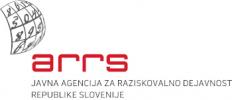Guidelines for management of tourist destinations based on models of carrying capacity and tourism flows
Principal Investigator at ZRC SAZU
Katarina Polajnar Horvat, PhD-
Original Title
Smernice za management turističnih destinacij na podlagi modelov nosilnih zmogljivosti in turističnih tokov
Project Team
Mateja Breg Valjavec, PhD, Daniela Alexandra Teixeira da Costa Ribeiro, PhD, Aleš Smrekar, PhD-
Duration
1 April 2018–30 September 2019 -
Project Leader
dr. Ljubica Knežević Cvelbar (Faculty of Economics)
-
Financial Source
Javna agencija za raziskovalno dejavnost Republike Slovenije

Partners
Research Center of Slovenian Academy of Sciences and Arts, Faculty of Computer and Information Science, Faculty of Economics
The research project responds to the need to ensure sustainable development in tourism. Tourism thus, is one of the activities that significantly contributes to the problem of sustainability. The United Nations Environment Program has recognized that its uncontrolled conventional development poses potential threats to many natural areas around the world. Tourism causes enormous pressure on nature, affects soil erosion, increases pollution, emissions of dangerous substances into the sea, the loss of a natural habitat, and increases the risk of fire in forests. This is supported by more and more examples. Passenger ships in the Caribbean generate more than 70,000 tonnes of waste annually. The development of tourist infrastructure in Yosemite National Park in the US has caused such a terrible pollution of the environment that even loss of protected species has occurred, and the extremely smog can prevent views of the Yosemite Valley from the plane. European destinations, such as Barcelona and Venice, have been staging popular protests against further development of tourism for many years. In Dubrovnik, the cruiser almost damaged the walls of the old town. Close to home in Bled this summer they were invited by the director of the Tourist Organization of Slovenia to invite Slovenians to avoid the one-day visits to Bled during the season. There is a challenge, both at global and local level, to find effective ways to reduce the damage caused by tourism to the environment. The purpose of this project is to understand and strengthen the carrying capacity of tourist destinations in Slovenia with the aim of developing and testing a model for measuring load capacity and visitor management and proposing guidelines for the management of tourist destinations.